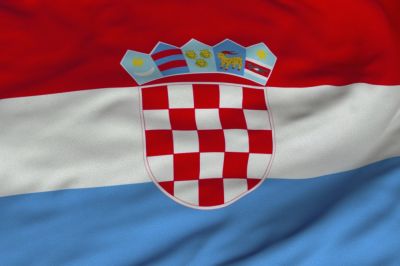Population (mln): 4,29
Official language/s: Croatian
Internet TLD: .hr
Calling code: +385
Unemployment rate Sep 2011 (%): N/A
Unemployment rate under 25 years Sep 2011 (%): N/A
Unemployment rate Sep 2012 (%): N/A
Unemployment rate under 25 years Sep 2012 (%): N/A
Population statistics 20-29 age group 2011 (%): 13,4
Country codes in education system: HR
Expected duration of education (years): 15,3
Higher education institutions in the Republic of Croatia are
universities (along with their constituents – faculties and other legal
entities), polytechnics and colleges. Universities (sveučilišta) are
higher education institutions which deliver university study programmes
in at least two scientific and/or artistic areas in a greater number of
fields. Universities may also deliver professional study programmes At
each university, teaching and research is usually carried out by one the
following constituent units of the university:
- Faculties (fakulteti) organise and carry out university studies
and develop scientific research and professional work in one or more
scientific and professional fields. Faculties may also establish and
carry out professional studies.
- University departments (odjeli) participate in the
implementation of study programmes, develop scientific, artistic and
professional work in a single field of science or in an
interdisciplinary area of science and participate in the implementation
of university studies.
- Art academies (umjetničke akademije) organise and carry out
university artistic studies and develop first-rate artistic creative
endeavour and scientific research in arts. Art academies may also
establish and carry out professional artistic studies.
- University institutes (sveučilišni instituti) perform
scientific research in a single or several related scientific fields.
University institutes may perform highly professional work and
participate in teaching according to enactments passed by the
university.
Aside from teaching and research units, other constituent units of
universities can include foundations, associations, student centres,
health care institutions, libraries and technological centres.
Polytechnics (veleučilišta) and schools of professional higher
education or colleges (visoke škole) are higher education institutions
which deliver professional study programmes. These two institutions
differ in the scope of the programmes they offer: polytechnics are those
schools of professional higher education which deliver professional
study programmes in three or more scientific fields. Their mission is to
offer application-oriented programmes which are professional in
character and which often include practical work experience in the
general area of study. Both of these types of higher education
institutions can organise and conduct professional study programmes and
issue first and second cycle degrees (universities – academic and
professional, other higher education institutions – only professional),
but only universities can implement third cycle education.
Public higher education institutions are those established by the
state. Private universities, polytechnics and schools of professional
higher education are established by founders in the manner prescribed by
the law and regulations related to the establishment of institutions.
Counties, towns and municipalities may establish schools of professional
higher education by decisions of their representative bodies.
Currently there are 137 higher education institutions in Croatia,
respectively: 7 public universities, 3 private universities, 80
constituents of the public universities, 3 private polytechnics, 13
public polytechnics, 28 private colleges and 3 public colleges. The
large number of higher education institutions is mostly due to the fact
that the four largest universities (Zagreb, Rijeka, Osijek and Split)
are not integrated and their constituents (faculties, centres etc.) are
legal entities.
The universities in Zagreb, Split, Osijek and Rijeka are
mainly composed of smaller constituents - faculties, which are legal
entities. Universities in Zadar, Dubrovnik and Pula as well as the
International University in Dubrovnik, the Croatian Catholic University
in Zagreb and the Media University in Koprivnica are composed of
departments, which are not legal entities.
According to the database of the ASHE, Croatian higher education
institutions offers more than 1200 study programmes. According to the
Central Bureau of Statistics, in the winter semester of the 2011/2012
academic year, the total of 152 857 students enrolled in pre-Bologna
studies and first and in the two-cycle degree system studies. Out of the
total number of students enrolled in institutions of higher education
in the Republic of Croatia, 76.6% enrolled in faculties, 15.9% in
polytechnics, 6.2% in schools of professional higher education and 1.3%
in art academies. Also, in the 2011/2012 academic year, the total of 1
197 students were enrolled in postgraduate specialist studies. In the
2010/2011 academic year the total number of doctoral candidates (PhD
students) was 3 451.
source:
Eurypedia - The European Encyclopedia on National Education Systems
http://eacea.ec.europa.eu/education/eurydice/eurypedia_en.php
